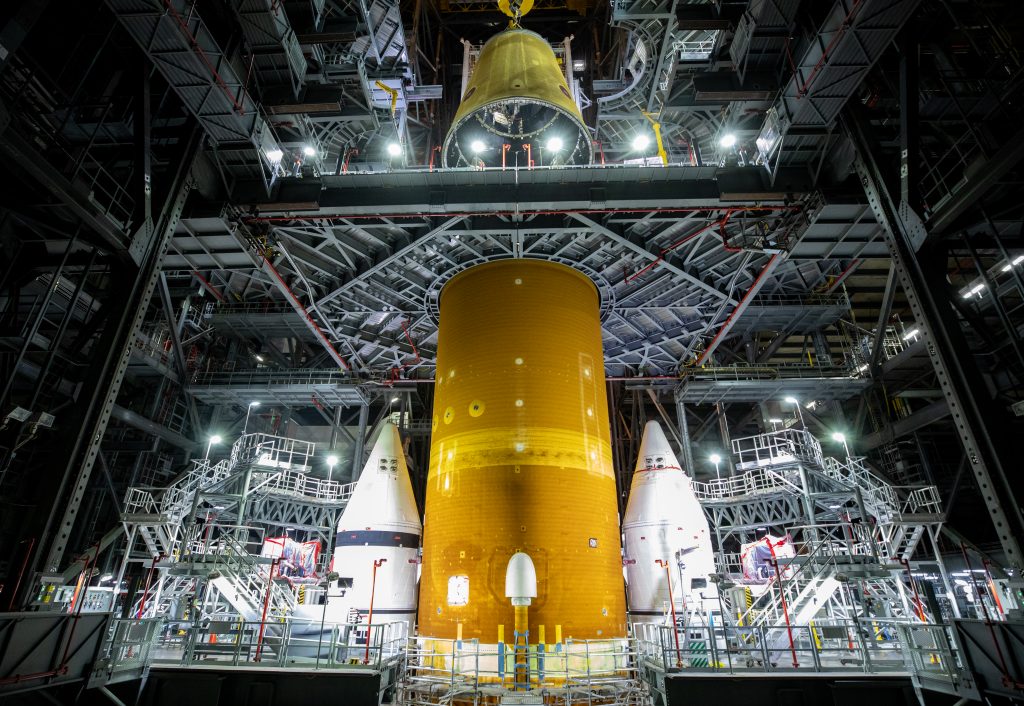This past weekend, NASA Deputy Administrator Pam Melroy, along with fellow veteran astronauts Michael López-Alegría and Scott Kelly, were inducted into the United States Astronaut Hall of Fame. As the inductees of the 2020 class, they joined the 99 individuals who currently hold that this esteemed honor. Astronauts López-Alegría, Melroy, and Kelly were selected as inductees in 2020. However, their induction ceremony was postponed, allowing us to safely honor their achievements with family, friends, and the NASA workforce at Kennedy Space Center.
As I said during my remarks, “Astronauts cement America’s reputation as a beacon of discovery.” These three giants personify the American character as explorers, adventurers, and pioneers.
I hope you will watch this incredible induction ceremony and read my remarks.
NASA Administrator Nelson’s Remarks as Prepared
Good morning. John Zarrella, thank you for serving as Master of Ceremonies. More importantly, thank you for covering the space program for decades.
There are sites that symbolize the daring spirit of the American character. The Kennedy Space Center is one of those places.
It is a place where unthinkable missions are accomplished by remarkable people.
Explorers, pioneers, and adventurers have graced these grounds for nearly 60 years. It’s a fitting home for the Astronaut Hall of Fame.
Astronauts cement America’s reputation as a beacon of discovery.
Today, we gather to honor three legendary astronauts: Michael López-Alegría, Pamela Melroy, and Scott Kelly.
From this sacred site, these three pioneers propelled upward. They explored the heavens. They broke barriers and set records. They pushed the boundaries of humanity’s reach.
Today, we are inducting a trailblazer who wanted to play with planes, not dolls. As a young girl, she was fascinated by the sky. She dreamed of flying among the clouds. Well, she sure did. Pam Melroy served as the Pilot on two missions and the Commander on another. And if I may add, NASA is blessed to have a visionary leader like Deputy Administrator Pam Melroy.
Today, we are also inducting an adventurer who was raised in New Jersey. His parents were police officers. They pushed him to serve his community as an emergency medical technician during high school. They encouraged him – and his twin brother – to pursue lofty goals. Scott Kelly did just that. He inspired the world when he spent 340 days aboard the ISS. And we know Scott is proud that he and his brother, Senator Mark Kelly, were the first relatives to become astronauts in NASA’s history.
And finally, today, we are inducting an explorer who immigrated from Spain when he was a young boy. Michael López-Alegría would go on to perform ten spacewalks, holding the longest all-time EVA duration record among NASA astronauts. And he is not done yet. He will return to low-Earth orbit – this time, as Commander of the Axiom Mission 1 to the ISS.
We honor these three astronauts today for their extraordinary achievements in space. But let’s also learn from their aspirations.
Each of these individuals has a unique story. But each ventured into the cosmos as a NASA astronaut.
This agency brings people together for the benefit of humanity. That is the power NASA. We unify. We discover. We inspire.
Americans and people from around the world will continue to come to this museum. Many of them will be children… members of a new generation – the Artemis generation.
As they learn about the legacies of these astronauts, they will be inspired. Perhaps they will one day join the NASA family as a technician or mathematician. Maybe they will walk on the Moon… or take humanity’s next giant leap and venture to Mars.
There are limitless possibilities because of the endless inspiration found in this museum of giants.
Michael, Pam, and Scott, congratulations on this well-earned recognition.
Thank you for daring us to keep looking upward and pushing outward into the unknown.
God bless you.



